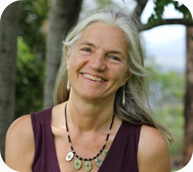December Solstice 2023

The December solstice falls on Fri 22 Dec at 1.27pm AEST (Queensland time) and has a very harmonious and grounded energy this year with the Sun exactly trine the Moon in Taurus.
This Solstice is when the Sun reaches its southernmost position overhead at the Tropic of Capricorn (remember that from geography in primary school? 😀). Guess what, the Tropic of Capricorn takes its name from Astrology, from the fact that the Sun moves into the tropical zodiac sign of Capricorn on this day.
The word ‘solstice‘ comes from Latin meaning ‘the Sun stands still’. If you follow the position of sunrise along the horizon during the year, you’ll notice it changes with the seasons. At the solstices in Dec and June, the Sun reaches its furthest point in one direction before returning towards the centre point again. Many ancient sacred sites were aligned with the sun’s position at the solstice, creating a magical effect at the solstice sunrise, including standing stone circles such as Stonehenge and the Newgrange monument in Ireland.
In the southern hemisphere, the December Solstice is the longest day of the year and the shortest night, traditional midsummer time. You’ll notice this more the further south you are, where the days will be very long. After this, days get shorter as we start to move towards autumn and eventually into winter.
In the northern hemisphere the seasons are reversed, and so the December Solstice is of course the Winter Solstice, traditional midwinter time, the shortest day and the longest night, after which the days start to lengthen again and the world returns from the darkness of winter – quite literally in Northern Europe where the hours of daylight are very short indeed at midwinter! This was the origin of the Celtic festival of Yule, signifying the return of the light.
Solstices have always been traditional mid-season times of celebration and feasting. Have a wonderful Solstice, whether you’re celebrating midsummer or midwinter! ❤️
.
An astrology consultation with me can provide
clarity, insight and direction
Book an astrology consultation with me now
Mini Astro-sessions also available
Having a birthday this month?
Find out what the year ahead holds for you
with a Zodiac Year Ahead Report
Forecast goes from this birthday to your birthday next year
Order now!
Online courses available at
Foundation and Intermediate level
Start today – Register now!

